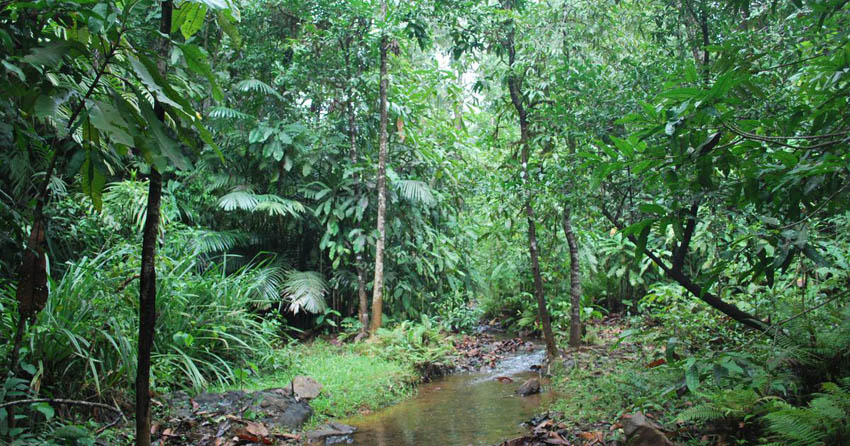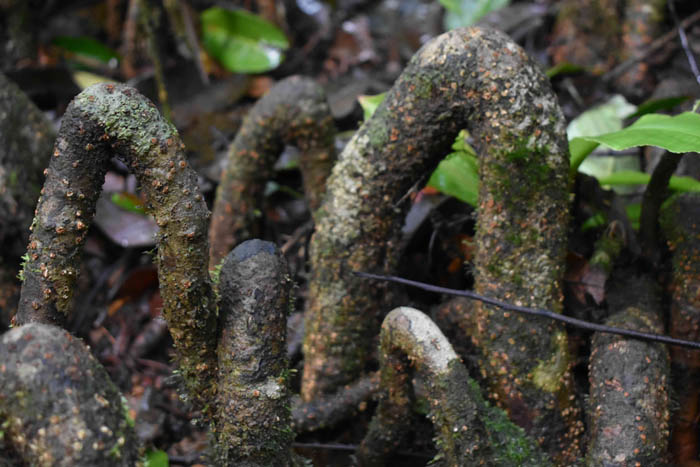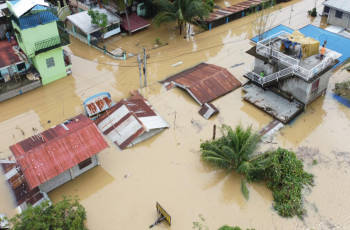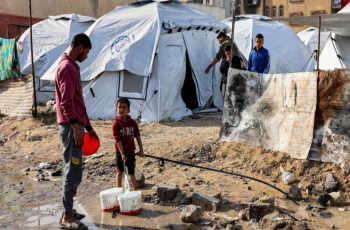How The Worship Of Sacred Freshwater Swamps Is Helping Preserve Biodiversity In The Western Ghats
Sacred swamp forests tend to be cleaner, with less disruption to the natural ecosystem and are frequented only on religious festivals or for offerings.

A freshwater swamp in Western Ghats. Photo: Ravikanth G
Locals have always worshipped here. Their ancient gods have sought refuge under the dark canopy, surrounded by the soft lapping of water against damp soil. The buzz of dragonflies and damselflies accompanies the croaking and singing of frogs.
Their overlapping pitches creates a natural orchestra, accompanied by the booming call of the Hanuman langur and the bark of grazing spotted deer. Their slender legs are sucked into the wet earth as they nose amongst the reeds and water plants, interspersing dainty bites with sips of water.
When the villagers come, chattering and wrapped in colourful saris, the deer vanish and the frogs disappear into the water with soft plops. Villagers collect a wide variety of medicinal herbs from these groves, these sacred forests that contain life-giving natural resources and, most crucially, freshwater.
Freshwater swamps in India have a long-standing relationship with tribal and village communities. In the Western Ghats, they are found in wet evergreen forests and are home to some incredibly rare wildlife and plants, as well as remnants of ancient local culture and custom.
The Western Ghats has three distinctive freshwater swamp types cradled within its fertile lap – Myristica swamps, Elaeocarpus swamps, and hadlus. These ancient swamp forests hold immense ecological and cultural value yet remain largely unexplored and unknown.

Relics of the past
Knobbly knee roots poke their arches out of the still water. The strong smell of decaying organic matter makes me wrinkle up my nose as I step cautiously through the muddy waters, my boots making a dull sucking sound as I clumsily move forward.
The canopy is dark and the only sounds besides the babbling of the stream are the singing of frogs and cicadas. A frog leaps out of my way as I slip on a mossy rock, landing with a gentle plop in the murky waters. A Malabar pit viper slithers away through the tangled roots of the Myristica trees towering above me.
Meet the ancient Myristica swamps that are found in pockets of the Western Ghats from Goa to southern Kerala.

True to their name, these swamps are dominated by species in the Myristicaceae family, which are well-adapted to life in a submerged environment. The thin, moist bark and large leaves of these evergreen trees allow for rapid shedding of water. These relic swamp forests were first discovered in Travancore in 1960 and over 79 tree, 26 shrub, 27 climber and 44 herb species have been documented from Myristica swamps across their endemic range.
Twenty three of the recorded tree species are endemic to the Western Ghats, and common species include Syzgium travancoricum, Gymnacranthera canarica, Myristica fatua var. magnifica and Semecarpus kathalekanensis.
These swamps are brimming with life, including over 600 species of fauna ranging from flatworms to large mammals. A study in 2014 recorded 14 species of freshwater fishes and 56 species of amphibians from swamps in southern Kerala.
The slow-moving waters of Myristica swamps make them ideal breeding habitat for frogs such as Nyctibatrachus jog, N kempholensis, N kumbhara and the endemic Mercurana myristicapalustris.
The former three species are found in the central Western Ghats while M myristicapalustris makes its home in the foothills of the Agasthyamalai Hills of Kerala. Over 206 species of butterflies from six families were reported from swamps in Kerala and due to a high density of diverse host plants, these swamps have been declared as critical butterfly habitat in India.
Myristica swamps have over 16 species of freshwater fishes with three species endemic to the Western Ghats biodiversity hotspot. Research has also stumbled across 21 reptilians, including 13 species of snake. The Malabar pit viper and the Gunther’s supple skink are the only reptiles endemic to the Western Ghats.
Kathalekan, one of the largest and best-known Myristica swamps in the central Western Ghats, is home to 59 species of birds, including the Indian great-horned owl, mountain imperial pigeon, Malabar pied hornbill, Malabar grey hornbill and Oriental pied hornbill. Endemic and endangered mammals that frequent these swamps include the Malabar giant squirrel, lion-tailed macaque, Nilgiri langur, as well as wild cats. Other endemic species frequent these swamps regularly as a perennial source of water.
Elaeocarpus swamps
A rare discovery even in India’s ancient forests, Elaeocarpus swamps are found in pockets of mid-elevation evergreen forest in the southern Western Ghats. Much like their close cousins, the Myristica swamps, they deserve higher conservation priority than they are thus far awarded. Trees in these swamp forests hail from the family Elaeocarpaceae and are considered valuable for their unique properties that make them valuable to the pharmaceutical industry.
Research has indicated that these trees have chemicals that may assist in the treatment of diabetes and cancer, although few studies have explored this further. Few sustainable populations of Elaeocarpaceae trees have been recorded from India, as they have a low germination rate and poor success. The Agasthyamalai Biosphere Reserve is one of the few locations in India where these lesser-known swamps can be observed.
.png)
Hadlus of Karnataka
Deep in the forests of Nagarahole and Bhadra Tiger Reserves, in Karnataka, one can find swampy lowlands filled with tall reeds and marsh-dwelling grasses. Gaur, sambar, and spotted deer can be found grazing in these pockets of freshwater amidst a wet evergreen forest.
In Nagarahole, hadlus are mainly concentrated in the teak-dominated regions of the tiger reserve. Due to their low-lying position in the ecosystem and the subsequent rich soils that retain moisture, hadlus remain green during the dry season, providing habitat and fodder for a range of endemic species. This microhabitat is critical for sustaining high ungulate biodiversity in both Bhadra and Nagarahole.
Little is known about the ecological significance of hadlus and their formation in the landscape. Some hadlus are known to have formed after the relocation of once-agricultural tribal settlements from protected areas, leaving behind swampy patches of fertile land.
A study on butterfly diversity in the central Western Ghats surmised that hadlus may provide critical habitat for endangered butterflies, especially serving as stopover sites for migratory butterflies. The relocation of agricultural settlement and the subsequent return of the land to its natural state is thought to be the most likely cause for the formation of hadlus along the central Western Ghats.

Faith and conservation go hand-in-hand
The practice of assigning religious value to forest patches dates to tribal communities that placed value on all living and non-living elements of nature, be they rocks, trees, waterbodies, or wildlife. In the Western Ghats, many hunting communities have preserved their ancient customs, including that of sacred grove worship.
Sacred forests are preserved in honour of village gods, rather than the mainstream gods of the Hindu pantheon. Some commonly worshipped gods and goddesses in the swamps of Uttara Kannada district in Karnataka are Chowdi (water goddess), Huli Devaru (tiger god), Naga (snake god), Jatka (protector god), Bhoota (evil spirit), and Devi/Vanadevate (mother goddess and the oldest god in sacred swamps).
Having visited various sacred groves while exploring the Western Ghats, I noted the differences between sacred swamp forests and those that are not used for religious worship. Sacred swamp forests tend to be cleaner, with less disruption to the natural ecosystem, and are frequented only on religious festivals or for offerings.
Excessive trespassing is seen as disrespectful towards the gods that reside there. Similarly, collecting forest products, felling trees, poaching, hunting, fishing, and littering are viewed as offensive to the sentiments of the groves, leaving these pockets of forest as role models for community-led conservation. In contrast, non-sacred forested swamps are far more disrupted, with native vegetation frequently collected by local villagers.
Sacred swamp forests tend to be closer to human habitation, yet studies have found higher biodiversity in these patches than in non-sacred swamps. Thus, sacred swamps have higher conservation value and serve as a fascinating model for community conservation in this biodiversity hotspot.
Freshwater swamps are some of the Western Ghats’ least studied ecosystems with immense hydrological and ecological value.
They provide a perennial water source for irrigation and domestic use, create pockets of cooler temperature, regulate rainfall and their tangled root systems allow for the regular flow of pure water and prevent soil erosion. These incredibly productive and biodiverse systems give rise to life and are custodians of the past.
We cannot let them slip into the shadows.
-

China says shared Covid information 'without holding anything back'
2024-12-31 -

Mexico probes public thanks to drug lord for children's gifts
2024-12-31 -

More than half of Syrian children out of school: Save the Children to AFP
2024-12-31 -

Five years on, WHO urges China to share Covid origins data
2024-12-31 -

Anguish for South Korea plane crash relatives amid grim salvage
2024-12-30 -

South Korea investigators seek arrest of impeached president over no-show
2024-12-30 -

Climate change brought extreme weather, heat in 2024: UN
2024-12-30 -

Mayotte faces environment, biodiversity crisis after cyclone
2024-12-27 -

'Dangerous new era': climate change spurs disaster in 2024
2024-12-27 -

HRW accuses Israel of 'acts of genocide' for restricting Gaza water access
2024-12-19
